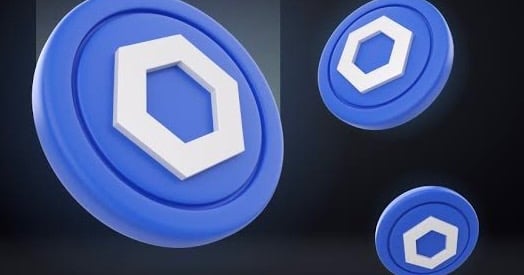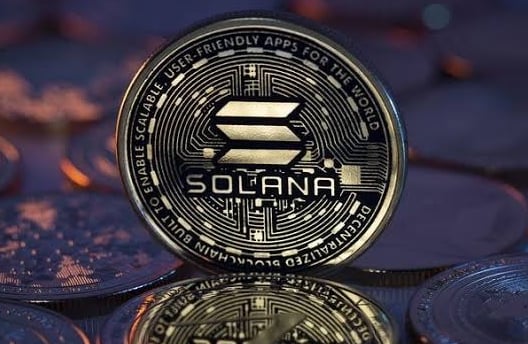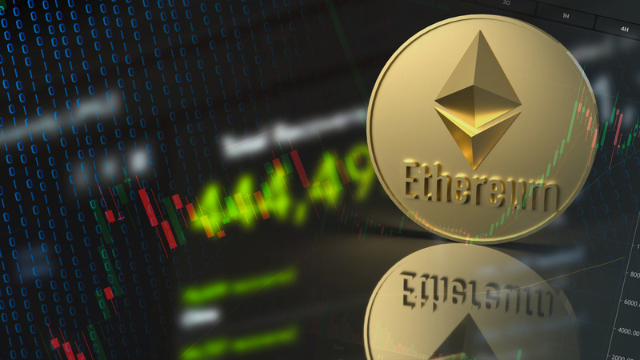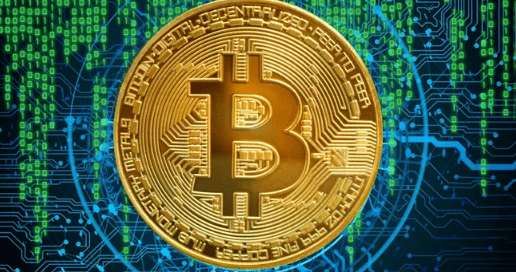
Top 5 best coins to invest in 2025
WORLD


Investing in cryptocurrencies in 2025 is much more than a leap of faith. This requires a more in-depth consideration and a more directed strategy. The market of digital assets still has a lot of upward momentum and is volatile due to rapid changes in technology, policy spheres, and the economy of the world. Even with this volatile environment, we are optimistic towards the market of crypto person not as just an investor, but as a person investing in various classes of assets as the global economy has shown signs of stability. The emergence of blockchain technology, increased institutional activity, and a growing acceptance from the market have, in essence, changed crypto from a large pool of niche markets to an enhanced financial zone.

Here is a list of top 5 coins to invest in the upcoming year
5.Chainlink


Chainlink is one of the critical infrastructure projects solving one of the most critical issues surrounding decentralised systems: extracting information from verifiable outside data. As a decentralised oracle network, Chainlink represents a secure middleware that allows smart contracts to connect with external real-time data feeds and hence bridges open-source blockchain networks and off-chain or cross-chain source networks. The provider's premised innovation provides inviolable data from a myriad of sources enabling the smart contract to execute properly and is operational in multiple blockchain platforms.
The Chainlink decentralised oracle network will allow smart contracts to interact securely with external systems; facilitating the development of complex financial instruments, insurance products, and blockchain applications that require accurate real-time information. The network uses an elaborate system comprised of independent node operators who provide this service by retrieving, verifying, and delivering telemetry data across various blockchain networks; this forms a robust, trustless transmission of data. Chainlink's technology has become increasingly important in decentralised finance (DeFi), where accurate price feeds, market data, and external information are pivotal to the proper execution of complex financial processes. Chainlink's oracle services have been adopted by major blockchain projects and traditional enterprises for their reliability and inclusive supply of data.
The LINK is a multi-editorial native token used to pay node operators and serves as a staking mechanism to guarantee data reliability. Its decentralised way of solving the "oracle problem" has emerged it to be among the foundational infrastructure providers in the blockchain ecosystem, so much so it could apply in other industries like insurance, supply chain management, and regulatory compliance as a provider of reliable and decentralised data. Its continuous technology evolution, overall growth and development of the ecosystem, and fundamental part of blockchain infrastructure make it a very interesting investment prospect for those who can understand the broader technological potential of decentralised networks.
4.Dawgz AI


Dawgz AI combines artificial intelligence and blockchain technologies. Certainly, this marks a new beginning in the integration of sophisticated mathematical technologies. Dawgz AI could be an upcoming project from the cryptocurrency world, offering machine learning and AI solutions to enhance the functionality of blockchain in the era of more intelligent decentralised systems, solving complex computational challenges. It could conceivably be a project engaged in producing technologies whereby AI could enable smart contracts to become more intelligent, automate complex decisions, and construct more adaptable blockchain applications.
Dawgz AI, in effect, combines the decentralised hash technology with the analytical and predictive capabilities of artificial intelligence, which can fill in some significant gaps in the current blockchain technology. This could have involved efforts to build AI algorithms to boost blockchain security measures, expedite transaction processing, or create interesting cases for decentralised applications that would learn and adapt in real-time. Some potential applications could involve the more complex building of fraud detection systems, intelligent contract execution, predictive merchandising analysis, and other autonomous governance feedback mechanisms. The intersection of AI and blockchain may mark a territory of technology innovation, and possible applications stretch from finance through healthcare and supply chain management to countless other industries. Being a new project, Dawgz AI would be considered a higher investment risk than more established cryptocurrencies.
An investor in Dawgz AI would have to go deep into due diligence to learn about the team's expertise, its particular technological approach, and its long-term vision. Tangible technology development, capturing the support of a developer community, and manifesting practical value propositions beyond theoretical promise could ultimately render such projects successful. Projects at the intersection of AI and blockchain remain purely speculative but represent more and more interesting future technological possibilities.
3.Solana


Emerging from the background of blockchain platforms developed to tackle serious scalability and speed issues that plagued earlier blockchain networks, Solana was founded in 2017 by Anatoly Yakovenko. This innovative platform embodies groundbreaking consensus mechanisms known as Proof of History, which differ fundamentally from those used for other conventional blockchain networks. This innovation has allowed Solana to unleash unprecedented transaction speeds, processing up to 65,000 transactions every second with transaction fees most often less than one cent.
This sacred performance level makes Solana a promising choice for app options that require fast and cheap transactions, like DeFi, NFT markets, and dApps. Its network architecture is specifically structured in a manner to measure computation bottlenecks, combining both Proof of Stake and Proof of History to bring a powerful blockchain ecosystem. Because of its solution to the blockchain trilemma- decentralisation, security, and scalability platform made itself appealing to many developers and investors. This type of system has attracted lots of interest from developers and investors as an appealing alternative to projects on Ethereum that want to reduce transaction costs and increase transaction speeds. Its ecosystem is rapidly developing, being home to many innovative projects such as decentralised exchanges, lending platforms, and complex financial instruments. Major venture capital firms and blockchain investors have shown considerable interest in Solana and pointed out its ability to drive a switch in blockchain technology.
The network's native token, SOL, has seen plenty of price appreciation and market adoption. Even though Solana has faced a few challenges, and stability problems referred to its network, it continuously improves its infrastructure and wins over developers. A continual technological evolution pledges to shield and strengthen Solana's infrastructure. Its capability to support complex smart contracts alongside keeping its performance high will endear Solana to the innovators and investors willing to deal with agile blockchain alternatives.
2.Ethereum


Ethereum revolutionises the blockchain platforms beyond cryptocurrency transactions, launched in 2015 by Vitalik Buterin. With Ethereum, smart contracts were introduced, programmed agreements that execute automatically once specific conditions are met. This upgraded blockchain from merely a financial transaction process into a full-fledged computing platform able to run decentralised applications (dApps) across several industries. From a technological standpoint, the year 2022 is historic, as the network moved from proof-of-work to a proof-of-stake consensus mechanism dubbed "The Merge," reducing energy consumption by nearly 99.95% from its previous model.
This transition resolved grave environmental concerns by enhancing scalability and efficiency. Ethereum has become the biggest infrastructure for decentralised finance (DeFi), allowing complicated financial services without traditional intermediaries. The platform has thousands of tokens and is an enabler of complex blockchain applications, varying from decentralised exchanges to non-fungible token (NFT) marketplaces. Its vigorous ecosystem, nurturing the developers worldwide, culminates into a self-reinforcing network effect fuelling innovations ceaselessly.
The introduction of layer-2 scaling solutions like Optimistic and ZK-Rollups has vastly improved transaction speeds and reduced gas fees, increasing the network's accessibility and efficiency. Institutional interest in Ethereum has burgeoned since then, with several major financial institutions now exploring its potential for tokenisation of real-world assets, supply chain management, and complex financial instruments. Upcoming upgrades to Ethereum will allow upgrading solutions like sharding technology to further boost scalability and throughput, potentially handling thousands of transactions per second.
While Bitcoin largely focuses on being a store of value, Ethereum is looking to be a generalised, decentralised supercomputer intending to execute more complex computational tasks. Ether, Ethereum's native cryptocurrency, serves multiple purposes, including transaction fees, network validation, and value preservation.
1. Bitcoins


Bitcoin is, without a doubt, the basis and ultimate cryptocurrency as a concept of the very digital asset ecosystem since the genesis of its inception in 2009 with the proverbial Satoshi Nakamoto. As the first decentralised digital currency, it surpasses merely speculation to be a worthy contender to the financial status quo on the global landscape. It becomes almost a defining proposition to say that hard-capped 21 million coins confer scarcity upon Bitcoin, placing it in direct contrast to traditional fiat currencies that stand liable to unlimited duplication.
The cryptocurrency has evolved from a peer-to-peer electronic cash system to a mere reserve of value, dubbed digital gold. Here is where institutional adoption became a paradigm shift, with large corporate powerhouses and financial institutions debuting Bitcoin as a legitimate asset class. Companies like Micro-strategy and Tesla have added Bitcoin to their balance sheets. Financial giants such as Black-rock are launching Bitcoin-related investment products. The security of the Bitcoin network is unparalleled, as its proof-of-work consensus mechanism protects it from malicious attacks quite efficiently.
Technological advancements keep on enhancing the utility of Bitcoin, such as scalability challenges overcome by layer 2 solutions like the Lightning Network. The network remains beneficial beyond a simple store of value, as it allows for really fast and cost-effective transactions. Further bolstering Bitcoin was a lack of any geopolitical or traditional financial systems qualms showing against it in terms of possible provider hedges against economic instability. Bitcoin performance was phenomenal, experiencing an exponential rise over the last ten years and boasting general retail and institutional interest.
Halving events that historically follow price shocks always excites the crypto community. Regulatory clarity improved with a lot of countries coming up with a more comprehensive framework for the regulation of cryptocurrency. This may help bring some stability and legitimacy to Bitcoin investment.

